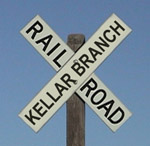Former mayor of Peoria Bud Grieves, who also happens to own a hotel downtown, has written the current mayor and council a letter with some advice on how to handle the so-called “wonderful development” — i.e., the proposed downtown Marriott hotel deal:
TO: The Honorable Mayor and Members of the City Council
FROM: Lowell (Bud) Grieves, Mark Twain Hotel
DATE: February 19, 2010
SUBJECT: JOURNAL STAR ARTICLE OF FEBRUARY 16, 2010
I am writing to clarify my position regarding the Downtown hotel project that was covered in an article appearing in the Journal Star on February 16, 2010. The article, while generally correct, missed some important points of which you should be aware.
I am supportive of City assistance in this project and stated so publicly over a year ago. I am still supportive of the concept of public assistance but only for the purpose of tearing down Big Al’s and other bars in upgrading the entire block. It’s a stretch, but this can be interpreted as a public improvement that the City can choose to make to leverage the recently upgraded Civic Center – I understand the importance of this!
However, I talked to City Attorney Randy Ray prior to the interview and was told that the $40 million in public funds were not restricted to public use outside the hotel but instead could be applied to any portion of the project. That means carpeting, televisions, elevators, and even the walkway connecting a private hotel to the Civic Center could be paid for with these funds. This is simply not fair to taxpaying, existing Downtown hotels that have to pay for these very same things on their own to compete. If your goal is to offer public assistance to Downtown hotels to accommodate Civic Center conventions, then you should see to it that all Downtown hotels get public assistance! I would like to build a skywalk from my hotel to my banquet facility (Packard Plaza) and would request City funding assistance to do so.
The convention business is slow, and I have never seen the hotel business this bad. John Q Hammonds recently backed away from the build out of additional rooms at the Embassy and gave back $500,000 to the City of East Peoria. Does this sound like a strong recovering market to you? Perhaps this project will not go and let you off the hook. If not, I would urge you to limit the use of public money to public improvements, prior to issuing the bonds. Failure to do so will set an indefensible precedent, and you will have to live with the consequences.
Thank you.
The project’s developer, Gary Matthews, who last year confidently stated that he’d have all his financing in place by January of this year, now says he’ll ask for an extension from the City Council on the redevelopment agreement. He added this:
Design plans for the $100 million hotel are also set to change: Matthews tells us the “blended look” between the Pere Marquette and the Marriott will be slightly different.
There’s only one reason to change the design at this point, and that’s to save money. I shudder to think what the “new” look will be.
What the Council should do (but they won’t) is cancel the whole project for the same reasons they never should have entered into the agreement in the first place. Matthews’ inability to secure financing despite having 40% of the cost of the project covered by the City should be a clear enough sign to the council that this is a bad investment.
But then, bad investments are no big deal when all you’re investing is other people’s (i.e., Peoria taxpayers’) money.

 The Peoria Park District, City of Peoria, and the clandestine Kellar Branch Corridor Corporation
The Peoria Park District, City of Peoria, and the clandestine Kellar Branch Corridor Corporation